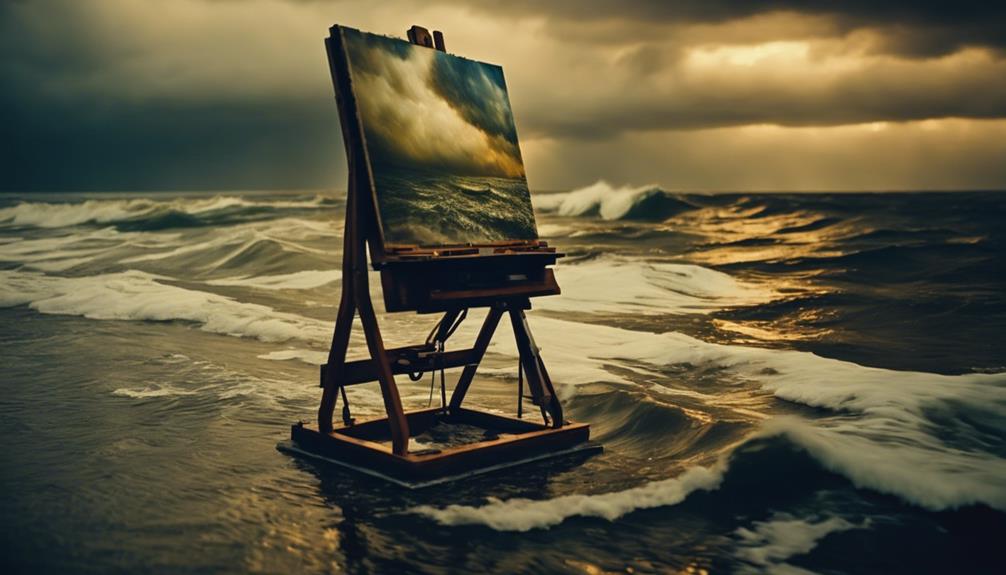Ethical Navigation: AI-Generated Art’s Impact on Creators
The rise of AI art has stirred a complex debate around the ethics of creativity, ownership, and the artist’s place in today’s world. This new era forces us to rethink how human creativity and technology can coexist. We’re faced with the task of finding a balance that honors both human talent and technological progress. It’s a tricky journey filled with questions that deserve our attention.
Creators are now at a crossroads, figuring out how to ethically use AI in art without compromising the value of personal expression. This situation requires carefully considering how we can respect AI’s innovative potential and human artists’ unique contributions. The goal is clear: create a space where technology supports rather than overshadows human creativity.
In doing so, we must stay true to the principles of clear communication and respect for individual creativity. We aim to foster an environment where artists feel empowered to use AI tools to complement their work, not replace it. The conversation around AI and art is ongoing, and by engaging with it thoughtfully, we can pave the way for a future that respects and celebrates both human and technological achievements.
Key Takeaways
- AI art challenges ethical use and personal expression.
- Balancing technology and human talent is critical.
- Foster a space where AI complements, not replaces, creativity.
Defining AI Art
AI-generated art is changing the game in how we see creativity today. It uses advanced algorithms to help or even take over art making, pushing the limits of what we thought art could be. This new wave isn’t just about copying past art styles; it’s about creating something completely new, showing us a fresh way to approach art.
The blend of AI technology and human creativity opens doors to unique art pieces. It’s making us rethink who the actual artist is – the person or the machine. This mix is exciting but also brings up big questions about the originality and ownership of art. As AI art becomes more common, we question everything we know about how art is made.
Yet, this technological progress also makes us think about the ethics of using AI in art. The relationship between AI-made art and ethical concerns is complex. It’s essential to have ongoing conversations about how technology changes how we create and view art, keeping the dialogue open about the future of creative expression.
Ethical Concerns
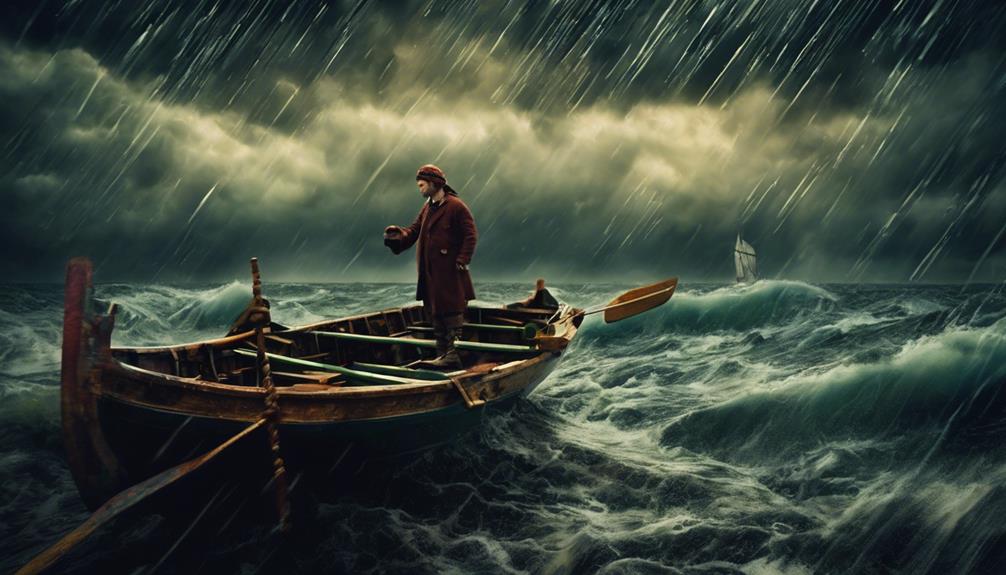
The rise of AI-generated art has sparked a debate about the ethics of creation, particularly regarding the rights of creators and the authenticity of the artworks. Questions about who owns an AI-assisted piece and whether it can be considered original are at the forefront. There’s also a concern about AI art potentially copying existing copyrighted works without permission. This situation highlights the need to balance embracing new technology and respecting copyright laws.
Creating art with AI tools poses challenges for determining the ownership and originality of such works. This issue is particularly pressing when AI produces art that closely resembles copyrighted material without explicit authorization. It emphasizes the importance of navigating the fine line between innovation and protecting creators‘ rights.
Creator Rights Impact
We see new challenges regarding artists’ rights in digital art, especially as AI art becomes more common. The lines between what’s created by a person and what’s created by a computer are getting fuzzy. This is a big deal because it’s hard to figure out who owns what when an AI makes something that looks a lot like a human-made piece of art. For artists trying to navigate this new territory, it feels like they’re on a tightrope, balancing embracing new technology and protecting their hard work.
Legal issues around ownership and authorship are becoming hot topics. The old rules about who owns a piece of art and its rights don’t always apply neatly to AI creations. This uncertainty makes it challenging for artists to protect their work. They’re facing a world where a computer program could mimic their next piece, making it hard to tell who really ‘made’ something. To deal with these problems, we must consider how AI fits into art. We must ensure artists’ rights aren’t ignored because everyone’s excited about what’s new and shiny in technology.
Authenticity Vs. AI
As artists and critics ponder the impact of AI on the art world, the issue of authenticity takes center stage. The emergence of AI in art creation sparks debates over creativity’s essence and the emotional resonance that has long defined human expression. This development is mixing up our perceptions of what’s made by humans versus machines, leading to a rethinking of what makes art genuine.
When code and algorithms become critical players in making art, it gets harder to tell who the creator is. This confusion raises ethical questions about what we consider original and authentic in today’s digital era. It’s crucial for there to be clarity and proper credit given to ensure the value of both AI and human contributions to art is appreciated.
Ownership Challenges
Determining who owns AI-generated art poses a tricky situation, especially when trying to figure out the balance between human artists and the technology they use. Our legal rules aren’t set up to handle artificial intelligence’s role in making art. This leaves creators in a bind, unsure how to protect their work in the digital art scene.
As AI continues to play a more significant role in art, we must rethink our laws and what they cover. The boundaries between what’s made by humans and what’s made by machines are getting fuzzier.
| Aspect | Challenge |
|---|---|
| Legal Frameworks | Unclear rules on AI’s role in art |
| Copyright Laws | Not up to date for AI-made art |
| Ethical Guidelines | Lack of fairness and credit rules |
These issues show why finding a way that considers both technology and creativity is crucial. With artificial intelligence becoming a regular part of the art world, the push for new rules and ethical standards is more important than ever.
Originality and Authenticity
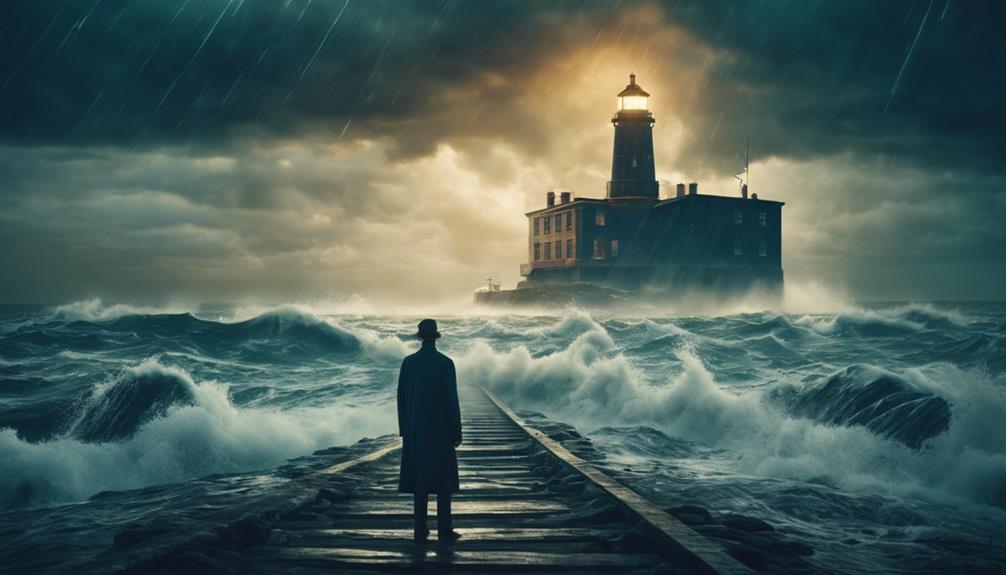
Whether AI-generated art is truly original or not is a hot topic. People worry because these artworks are made based on styles and patterns from existing art. This process makes some wonder if AI can create something new or rehash old ideas. Unlike artists who put flair into their work, AI creates art based on set rules and familiar styles. This has led to debates about whether such art lacks the depth and innovation that comes from human creation.
As technology evolves, it’s getting harder to tell what’s wholly original and what’s been created with the help of algorithms. This change is making people rethink what creativity means. The blending of AI with art is not just about making new pieces; it’s sparking discussions on the ethics of how we create. Finding a middle ground that values both new technology and the irreplaceable human touch in art is essential.
Perspectives and Debates
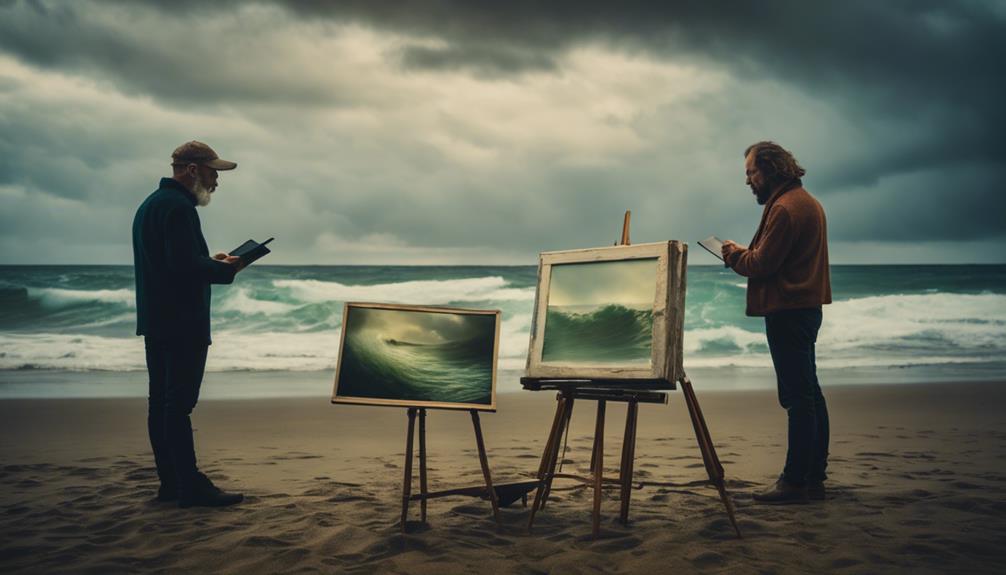
The debate on AI in art creation is heating up as technology gets more sophisticated. This issue touches on ethically grey areas and questions about artists’ rights that many in the creative industry find concerning. It’s not just about how AI changes the way we make art but also about who gets to own that art and how we define creativity in the era of screens and keyboards.
The conversation has gotten more complex with recent events, making it clear that this isn’t a black-and-white issue. Some see AI as a tool enhancing human creativity, while others worry it could replace human artists altogether. This debate forces us to think deeply about what it means to be creative and how we value art.
We’re moving beyond simple questions of right and wrong, diving into what art will look like and how we’ll relate to it. This is vital because it helps us understand the broader implications of technology on our cultural landscape. It’s a reminder that as we march towards an increasingly digital future, we must keep asking ourselves hard questions about the role of human creativity.
Ethical Implications Explored
The ethical implications of AI in the realm of art spark discussions that challenge how we view creativity and ownership in the digital age. These conversations bring to light the need to find a middle ground where the contributions of both human and AI artists are valued and respected.
| Aspect | Human Perspective | AI Perspective |
|---|---|---|
| Creativity | Cherishes the human element | Broadens horizons |
| Authorship | Craves acknowledgment | This raises questions about the uniqueness |
| Ownership | Calls for clear rules | Adapts to evolving regulations |
| Ethical Landscape | Strives for equilibrium | Explores new frontiers |
| Innovation | Worries about losing essence | Promotes development |
The quest to establish ethical guidelines that honor human and AI contributions to art is at the heart of these discussions. The goal is to ensure that issues of creativity, authorship, and ownership are addressed in a way that respects the integrity and innovation brought by all creators, regardless of their origin.
Artists’ Rights Concerns
Conversations about artists’ rights and AI-created art touch on critical issues like authenticity, ownership, and the creative process. These aspects are crucial for several reasons.
AI-created art is shaking up traditional views on creativity. People are questioning whether art made with AI help holds the same value as art made entirely by humans. This shift makes us rethink what it means to be creative.
When it comes to who owns an art piece, AI complicates things. It’s hard to determine who should get credit, the artist or the AI, leading to tricky legal and moral questions.
Copyright issues pop up when AI art looks a lot like existing art. This similarity could mess with the art market and the rights of original creators.
There’s a considerable debate on whether AI art is ethical. Some worry it could replace traditional art skills, but others believe it’s a new art-making tool.
These discussions show how AI art changes the game for artists’ rights and the art world.
Ethical Guidelines
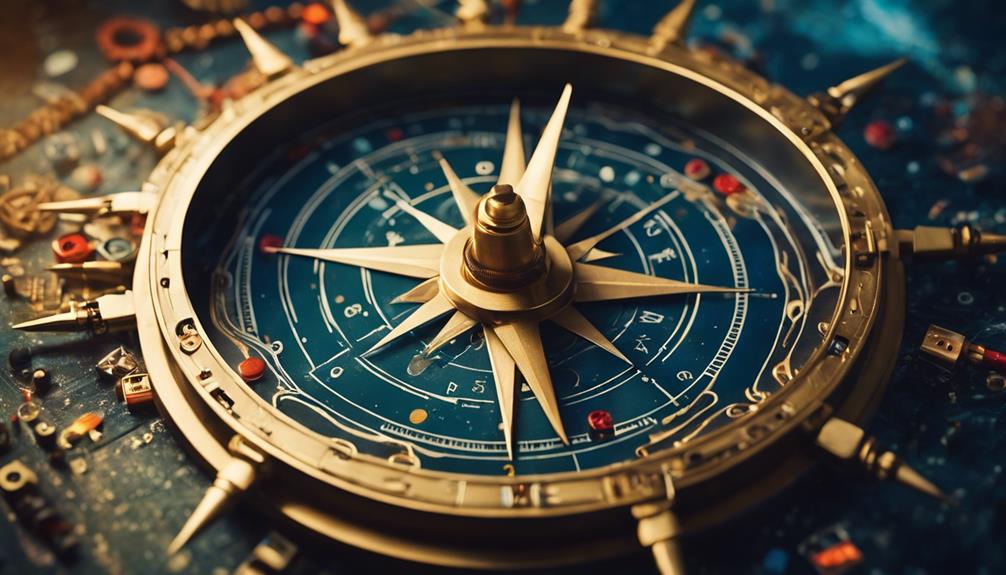
Creating ethical AI-generated art means being open about how it’s made. This includes telling people if AI was used and ensuring artists have the correct permissions for everything in their work. It’s about respecting the hard work of others and creating a positive space in the art world.
Artists should find ways to innovate without stepping on others’ toes. Working with others offers a way to stay ethical while pushing boundaries. This teamwork makes for a better understanding and respect for the challenges of making art with AI.
Honesty, respect for copyright laws, and encouragement of teamwork help AI art grow. This approach ensures that as technology changes, the art world can keep up without losing its ethical compass.
Future Considerations
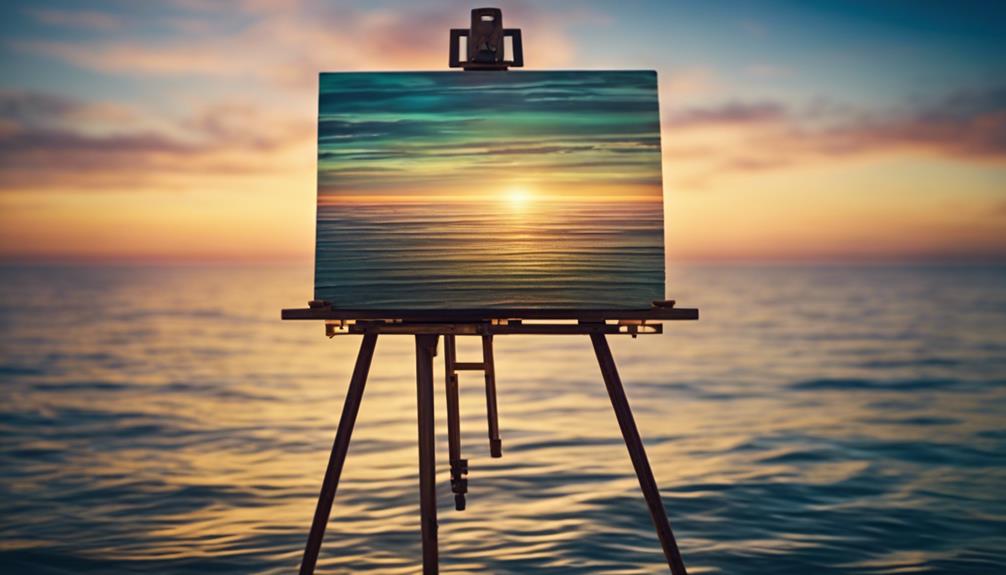
As AI art becomes more common, we must carefully think about the ethical issues it raises. Artificial intelligence in creating art holds great promise but also presents ethical dilemmas that need thoughtful solutions.
Here are key points to consider:
- Creating Ethical Guidelines is crucial. We need rules that protect artists’ rights while allowing for innovation. These should change as AI technology advances.
- Encouraging Cooperation among communities, lawmakers, and artists is vital. Working together can help set and uphold ethical standards, ensuring a balanced environment for AI art.
- Safeguarding Artists’ Rights should be a priority. It’s essential to have clear rules for giving credit and paying artists. This helps respect their intellectual and moral rights.
- Adopting Best Practices can guide creators and users of AI art. These practices should focus on being ethical, transparent, and fair.
Balancing Innovation
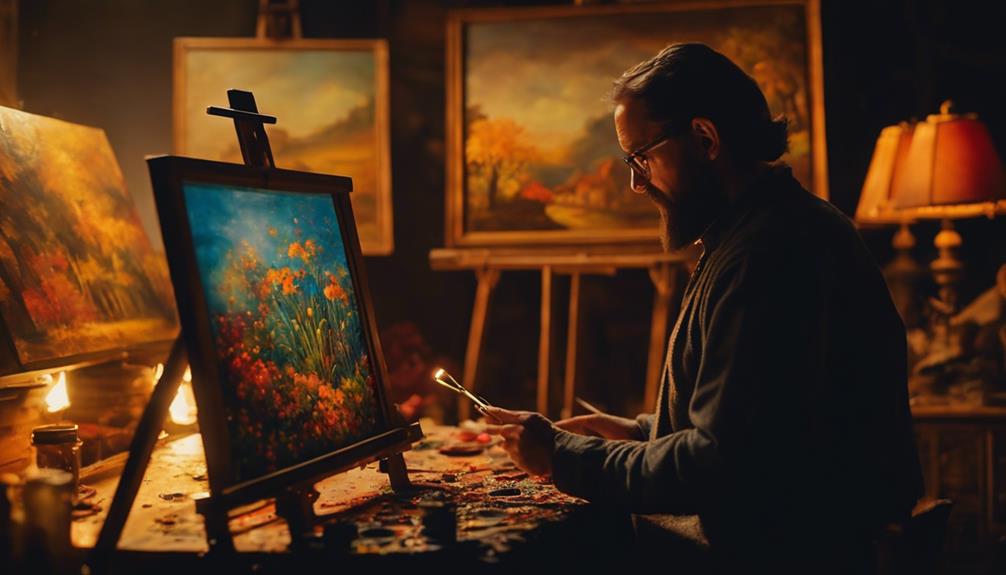
Finding the right mix between pushing the envelope and sticking to ethical guidelines is critical in AI-generated art. This innovation isn’t just about using fancy algorithms or machine learning. It’s also about discovering new artistic styles and methods that weren’t possible before. But, we must be careful to keep things ethical, especially regarding copyright issues.
AI in art is shaking up the traditional views on what makes something creative or artistic. This new way of making art with AI opens many possibilities. However, it also brings up big ethical questions. To ensure the AI art world stays healthy, these ethical issues must guide how technology grows.
It’s all about finding that sweet spot between exploring new artistic horizons and respecting the work and rights of human artists. As AI art grows, figuring out how to handle these ethical challenges will be crucial for everyone involved.
Frequently Asked Questions
What Are the Ethical Issues Surrounding the Use of Ai-Generated Art?
- AI creations question art’s originality.
- Copyright issues arise with AI art.
- Artist consent is often overlooked in AI work.
Is Using an AI Art Generator Ethically Wrong?
- Ethics of AI art touch on creativity, rights, and originality.
- Economic effects and skill value are central concerns.
- Cultural sensitivity and digital responsibility shape the discussion.
How Does AI Affect Art Creation?
- AI fosters creativity, pushing artistic boundaries.
- It simplifies imitating styles, making art more accessible.
- Sparks debate on authenticity and market effects.
How Is AI Art a Threat to Artists?
- AI art floods the market, risking artists‘ jobs.
- Copyright issues challenge artists’ rights and incomes.
- Authenticity and skill value face downgrading in art discussions.
